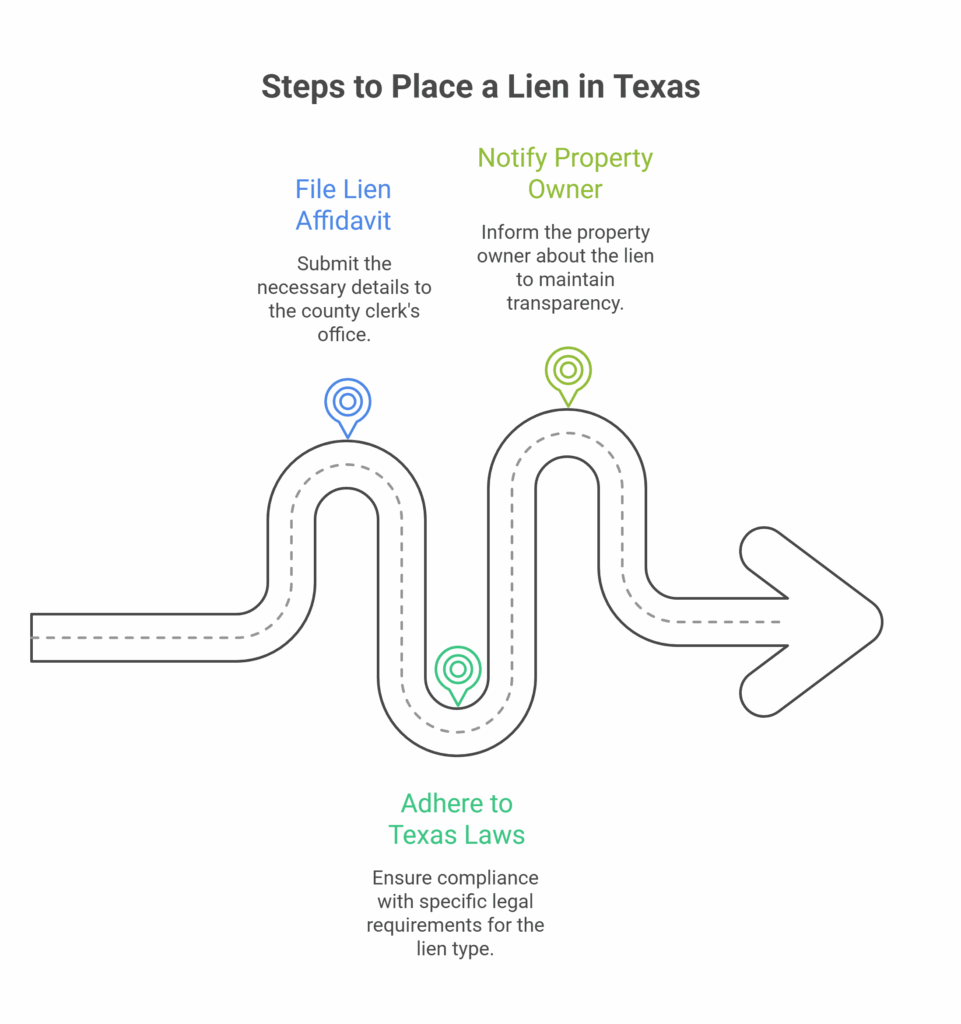Quick Answer: How to Put a Lien on a Property in Texas?
How to Put a Lien on a Property in Texas? The process involves filing a lien claim with the county clerk’s office where the property is located. Typically, this is done by contractors, subcontractors, or creditors seeking payment. You’ll need to prepare a sworn affidavit with details about the debt, property, and parties involved.
Texas law has strict deadlines and documentation requirements, so accuracy is crucial. Consulting an attorney or title professional can help ensure the lien is valid and enforceable.
Now let’s dive deeper.

What Is a Lien and Why Is It Important?
An individual who provides a legal remedy to those providing service or credit without payment receives protection in a lien. Serves as a lien on a financial property that has to be repaid before changing ownership.
Liens in Texas ordinarily exist against real estate and construction projects. Once a contractor, subcontractor, or supplier has not been paid for his or her work or materials, he or she usually bats in a mechanic’s lien. A judgment favoring the creditor may also result in a lien on the property. Filing a lien is a very strong way of securing interests, but it must be done correctly to be enforceable in court.
How to put a Lien on a Property in Texas?
If you are considering filing a lien, here are the key steps to follow:
1. Confirm Your Eligibility
To put a lien on a property is not available to all. It has to be because of the provision of labor, services, or materials that directly improved the property oneself or because of a legal judgment confirming that there is a debt. Ordinary contractors, subcontractors, and suppliers who have not been paid usually get mechanics’ liens, whereas creditors can file a judgment lien after winning a lawsuit.
2. Prepare the Lien Affidavit
A lien affidavit is the official document used to place a claim on a property. This document must include:
- The name and contact information of the lien claimant.
- A description of the work performed or materials supplied.
- The total amount owed.
- The legal description of the property.
- The date the work was completed.
Once completed, the affidavit must be signed and notarized before submission.
3. File the Lien with the County Clerk
An affidavit must be recorded in the office of the county clerk near the site of the property. Texas law provides different deadlines for filing a lien, depending on the type of work done and whether the property is residential or commercial.
- Residential project: Filing of construction lien within the third month after work completion must occur by the fifteenth day.
- Commercial project: The maximum delay is up to the fifteenth of the fourth month after work is completed for lien filing.
It’s crucial to meet these deadlines, as missing them could make your lien invalid.
4. Notify the Property Owner
After filing the lien, Texas law requires notification of the property owner within five days. This can be done by way of certified mail, providing a record of delivery to fulfill notification requirements.
What Happens After Filing a Lien?
The filing of a lien creates a legal encumbrance attached to the property, which precludes the owner from selling or refinancing it until the lien has been released, thereby almost invariably forcing the owner to pay the debt.
If the owner fails to take any action, you may have to enforce your lien by suing. A lawsuit may lead to foreclosure proceedings, which would cause the sale of the property to satisfy the debt. In most cases, however, the property owners would rather settle this matter before that.
How to Remove a Lien Once the Debt is Paid?
When the payment against the loan is made, the lienholder is required to file a release of the lien with the office of the county clerk, which serves to remove the claim from the property records. Should a lien remain against a property after the debt debts have been satisfied, the owner may obtain some form of legal recourse to effectuate the removal.
Key Considerations Before Filing a Lien
- Be sure to have a legitimate claim: Filing a fraudulent lien may incur legal penalties.
- Follow the right procedure: Texas has stringent requirements for lien filing hence correctness matters.
- Observe all deadlines Late filings may be rejected, rendering your claim invalid.
- Consult a professional where appropriate: While one can file a lien on one’s own, legal aid can assist in a smoother undertaking of the whole process.
Final Thoughts
Understanding how to put a lien on a property in Texas will help you legally protect yourself when debts do not get paid. If you are a contractor trying to get paid for work done or a creditor enforcing a claim, following certain steps is very important for properly filing a lien.
At Move On House Buyers, we focus on sell house fast in El Paso, making it simple, and eliminating hassle. We make true cash offers without added hidden charges, repairs, or agent commissions should you make a quick sale of a house. We help clients in the face of liens, financial difficulties, or just a simple, easy sale. Speak with us today to have an obligation-free offer in cash and advance comfortably!
Call us anytime at 713-561-5162 or connect with us on our website and we’ll lay out all of your options for your specific situation.
